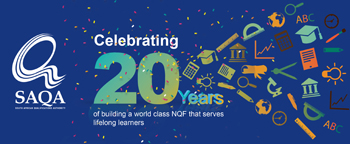
SADC to prioritize learner and worker free movement between states

The Southern African Development Community (SADC) will formally launch the SADC Qualifications Framework ( (SADCQF) on 19 April to re-commit to making the movement of learners and workers across the region a reality.
The Framework is a regional framework consisting of 10 levels, which are based on learning outcomes and as they increase, their level of complexity also increases.
In a statement issued by Joe Samuels, the Chairperson of SADC’s Technical Committee on Certification and Accreditation (TCCA) on Wednesday, it said the framework enables member states to reference their National Qualifications Frameworks (NQFs) or national education system, in countries where NQFs are still being developed, against the agreed regional framework, which means that SADC member states are able to benchmark their qualifications against the SADCQF.
The purpose is to enable easier movement of learners and workers across the SADC region and internationally, according to Samuels.
The framework was first established in 2011 by the Ministers of Education in the SADC region. A Technical Committee on Certification and Accreditation (TCCA) was then established to make the SADCQF a reality. The TCCA is a group of experts from the 15 SADC member states and is supported by the SADC Secretariat.
Meanwhile, the committee has since agreed on a way of implementing the framework. “This includes the adoption of ten alignment criteria to ensure consistency in the way SADC member states align their NQFs or national education systems to the SADCQF,” said Samuels.
Six SADC member states have agreed to pilot the alignment process and the outcome of this pilot will guide the roll-out of the alignment for the other nine SADC states.
“Regional alignment enables individuals to make comparisons of their learning and competence and also reduces unnecessary duplication of learning and effort when moving through SADC for study or work purposes,” he added.
Furthermore Samuels said, implementation of the framework also includes Quality Assurance (QA) and Verification of Qualifications. SADC has created a set of 16 regional QA guidelines that set QA standards at a regional level. Member States must align their quality assurance mechanisms with the regional guidelines.
To facilitate the Verification of Qualifications in the region, member states decided to create a regional qualifications verification network known as the SADC Qualifications Verifications Network (SADCQVN). The SADCQVN is a tool for SADC Member States to verify qualifications used in SADC.
The TCCA is reconvening in Johannesburg, South Africa from 18 to 20 April to review the progress in implementing the framework and to plot a way forward. At the meeting, the framework will be officially launched, marking the beginning of an era of co-operation and easier access for learners and workers across the SADC region.










































